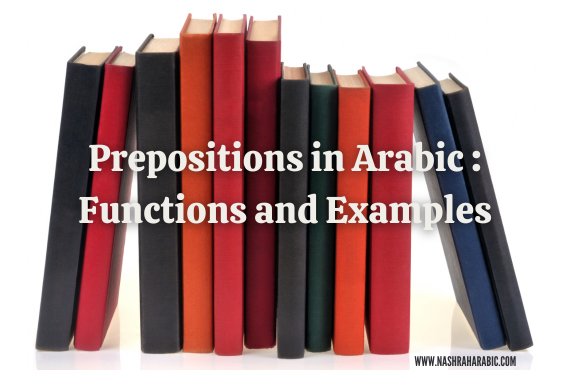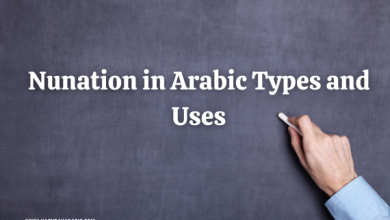Introduction to Prepositions
Imagine prepositions as the bridges in the landscape of language. They connect different parts of a sentence, showing how they relate to each other. Without prepositions, sentences would be like isolated islands, lacking the connections that help them make sense.
What Are Prepositions?
Prepositions are words that link nouns, pronouns, or phrases to other words within a sentence. They describe relationships in terms of time, place, direction, and manner. For instance, in the English sentence “The book is on the table,” the preposition “on” connects “book” and “table,” indicating location.
The Role of Prepositions in Arabic
In Arabic, prepositions serve similar functions, connecting words and phrases to provide context. They help indicate location, time, direction, and other relationships. For example, in the Arabic sentence “الكتاب على الطاولة” (The book is on the table), the preposition “على” (on) provides information about the position of the book.
Common Arabic Prepositions
Here are some frequently used Arabic prepositions:
- في (fi): In
- على (ala): On
- إلى (ila): To
- من (min): From
- عن (an): About
- مع (ma’a): With
- بين (bayna): Between
Prepositions of Place
Prepositions of place describe the location of objects or people. They help answer questions like “Where?”
- في (fi): Used to indicate something inside a place. Example: “الكتاب في الحقيبة” (The book is in the bag).
- على (ala): Indicates something on a surface. Example: “القلم على المكتب” (The pen is on the desk).
- تحت (taht): Means “under.” Example: “القط تحت الطاولة” (The cat is under the table).
Prepositions of Time
These prepositions provide information about when something happens.
- في (fi): Indicates a specific time. Example: “في الساعة الخامسة” (At five o’clock).
- منذ (mundhu): Means “since.” Example: “منذ يومين” (Since two days ago).
- خلال (khilal): Means “during.” Example: “خلال العطلة” (During the holiday).
Prepositions of Direction
Direction prepositions show movement or direction.
- إلى (ila): Means “to” or “toward.” Example: “ذهبت إلى المدرسة” (I went to school).
- من (min): Indicates origin or starting point. Example: “جئت من البيت” (I came from home).
- حول (hawl): Means “around.” Example: “أمشي حول الحديقة” (I walk around the park).
Prepositions of Manner
These describe how something is done.
- بـ (bi): Means “with” or “by.” Example: “كتبت بالقلم” (I wrote with a pen).
- مثل (mithl): Means “like.” Example: “جميل مثل الزهور” (Beautiful like flowers).
Using Prepositions with Nouns
Prepositions often combine with nouns to form phrases that provide additional information.
- Example 1: “الكتاب في المكتبة” (The book is in the library).
- Example 2: “الشاب على السرير” (The young man is on the bed).
Prepositions with Verbs
Prepositions also link with verbs to indicate actions or relationships.
- Example 1: “أنتظر من صديقي” (I’m waiting for my friend).
- Example 2: “أحب التحدث معك” (I love talking with you).
Idiomatic Expressions with Prepositions
In Arabic, some expressions use prepositions in unique ways.
- Example 1: “على فكرة” (By the way).
- Example 2: “بمساعدة” (With the help of).
Common Mistakes and How to Avoid Them
Common mistakes with prepositions include:
- Incorrect Usage: Using the wrong preposition for a particular context.
- Overusing: Adding unnecessary prepositions that don’t fit the sentence structure.
Tips for Mastering Arabic Prepositions
- Practice Regularly: Use prepositions in daily conversations.
- Read Extensively: Observe how prepositions are used in Arabic texts.
- Use Flashcards: Create cards with prepositions and their meanings for quick review.
Prepositions in Modern Arabic
While the core prepositions remain the same, their usage might vary slightly in modern contexts and informal speech. Understanding both classical and contemporary usage helps in mastering the language.
Conclusion and Summary
Prepositions are fundamental in Arabic, helping to express relationships and clarify meaning. By understanding and practicing their use, you can enhance your communication skills and grasp the subtleties of the Arabic language.
Learn more : Master the Basics of Arabic Grammar
FAQs
1. What are prepositions in Arabic?
Prepositions are words that link nouns, pronouns, or phrases to other parts of a sentence, indicating relationships of time, place, direction, and manner.
2. How do prepositions function in Arabic sentences?
They provide context and clarify relationships between different elements of a sentence, such as location, time, and direction.
3. What are some common Arabic prepositions?
Common prepositions include في (in), على (on), إلى (to), من (from), and مع (with).
4. Can prepositions be used with verbs?
Yes, prepositions are often used with verbs to indicate actions or relationships, like “أنتظر من صديقي” (I’m waiting for my friend).
5. What are some tips for mastering Arabic prepositions?
Practice regularly, read Arabic texts, and use flashcards to improve your understanding and usage of prepositions.
By mastering Arabic prepositions, you can enhance your ability to convey precise meaning and enrich your understanding of the language. Happy learning!
Remember to subscribe to our channel.




